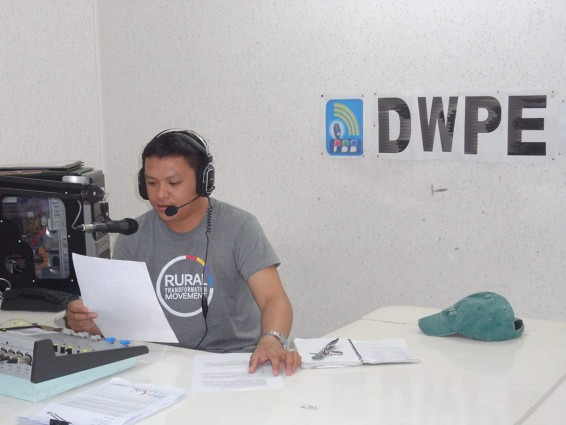
In Region II, the Philippine Rice Research Institute (PhilRice) in San Mateo, Isabela banks on radio to reach farmers in rural areas, which the station uses to relay updated agricultural information to increase farmers’ productivity and profitability. Based on a PhilRice study, radio is included in the farmers’ top three sources of agricultural information next to local government units and fellow farmers.
For six years, PhilRice Isabela sustains its School-On-the-Air (SOA) Program also known as Madiskarteng Pagsasaka in seven local FM and AM radio stations. Other than Isabela, the radio also reaches farmers in Cagayan, Nueva Vizcaya, and Quirino.
Radio station as rural partners
The SOA, which was launched in 2013, focuses on topics about rice and rice-based technologies and the latest agricultural programs and projects. To broaden the understanding and knowledge of farmer-listeners, an actual farm practicum is also conducted based on the topics aired.
“Our partnership with PhilRice Isabela started in 2014 when we wanted to strengthen our early morning programs, which cater to the farmers who are early risers. We accommodated PhilRice’s request for a regular 30-minute early morning program,” shared Vivian C. De Guzman, broadcast production supervisor, DWPE Radyo Pilipinas-Tuguegarao.
De Guzman said radio is still the cheapest, most reliable, and friendliest medium not only for farmers but for the general public.
“Other platforms may be available these times, but these are dependent on the strength of telecommunications transmission and connection to the internet. Internet connection may not still be stable in the countryside, that is why radio is still in every Filipino home,” she said.
Meanwhile, Andres Dela Cruz, Jr., science research specialist and Madiskarteng Pagsasaka anchor, said radio complements the limited number of agricultural extension workers. Tapping local radio stations, he said, ensures the delivery of timely information to more rice farmers.
Best way to do it
PhilRice Isabela established the strongest partnership with local radio stations among the branch stations. Its partners include DWPE 729AM Radyo Pilipinas Tuguegarao, DZDA 105.3FM Radio Pangkaunlaran, DWQP 92.1FM I Love Quirino. DWNS 96.5 UFM, and DWRE 107.9FM ISU Radio. Tie-up with DWTS 99.5 mhz FM Timek ti Sta. Teresita, Cagayan, DZND 97.5FM Radyo Kaluguran, DWET 1179AM Life Radio, and DWSI 864 khz Sonshine Radio are also on-going. Among the nine radio partners, seven air the SOA and PhilRice radio plugs for free. From 2014 to 2017, 390 farmer-learners graduated from SOA.
The station’s best practices in managing the program include using common language or dialect and terminologies and integrating feedback mechanisms such as text messaging and voice calls to gather the interests and concerns of the audience.
Farmer-learners are also involved in establishing SOA learning sites and in planning and implementing hands-on training on technologies included in the radio program.
The PhilRice station also aired rice production episodes in the Kaalamang Pagsasaka sa Himpapawid, a region-wide SOA on climate-smart agriculture implemented by DA Region II and International Rice Research Institute.
Currently, PhilRice is working with the Philippine Federation of Rural Broadcasters, Philippine Agricultural Journalists, Cagayan Valley Agriculture and Resources Research and Development Consortium, Consultative Group on International Agricultural Research -Climate Change, Agriculture and Food Security, local government units, and state universities and colleges for another season of SOA.
“The SOA will be conducted in the region’s major food producing provinces – Cagayan, Isabela, Nueva Vizcaya, and Quirino. It aims to engage 10,000 farmer-enrollees for the first season, then we’ll target up to 300,000,” Executive Director Lorenzo Caranguian of DA-Regional Field Office II said.
With reports from Maritha Manubay Baloy




